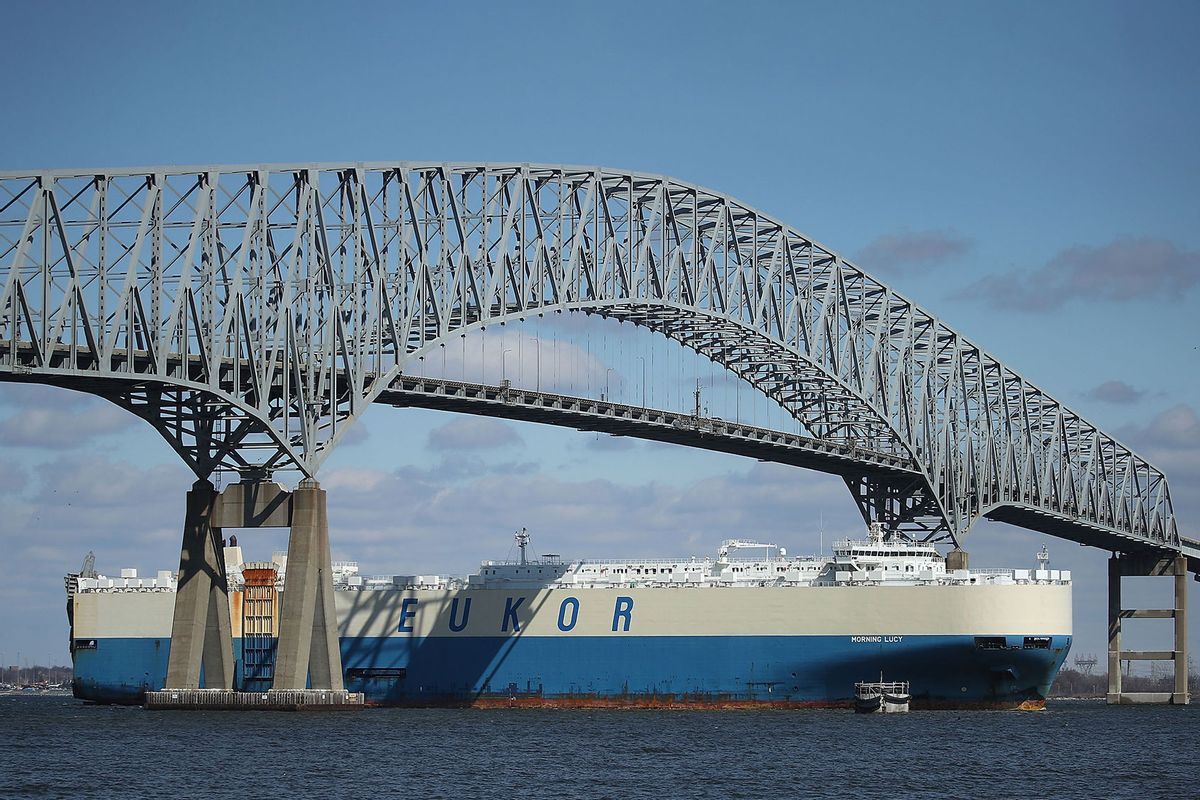I was born in Bayonne, New Jersey – a small metropolis situated on a peninsula adjacent to New York City – and my earliest memories are of towering smokestacks, steel drums of oil and cargo ships pumping across Newark Bay like quiet leviathans. But of all Bayonne’s industrial relics, nothing remains more firmly fixed in my psyche than the Bayonne Bridge: a parabolic, steel arch spanning a tidal strait called the Kill Van Kull.
I distinctly remember the gripping fear of crossing the bridge as a child. To my soft mind, the bridge’s vaulted structure made it seem as though our car would need to drive across the top, precariously balancing itself without the aid of guardrails or safety nets. A less anxious child might have assumed that, upon reaching the summit, our minivan would take flight, lifted by some divine magician toward an infinite sky. But I knew the truth: we were indubitably doomed to plunge to our deaths in the hazy water below.
As an adult, I’m plagued by recurring dreams of the Bayonne Bridge and serpentine highways, suspended in the sky, with missing sections. My family’s car has to clear each gaping jump like a frog leaping on lilypads across a pond. When we approach the bridge, rather than drive straight across, our car ascends the arch. As we reach closer to its midsection, the car begins to pitch backward, and we slowly tumble into my subconscious ether.
When I watched video footage of the container ship Dali colliding with Baltimore’s Francis Scott Key Bridge in the early morning hours on Tuesday, causing it to plummet into the Patapsco River, my adolescent aversion to bridges was vindicated unfortunately. There was something so nightmarish about watching the bridge’s skeletal frame fragment into pieces as it hit the water, shipyard lights glittering in the background like some sort of macabre flourish.
As clips of the bridge’s collapse quickly circulated on the internet, more and more people expressed similar sentiments.
“My childhood fear of bridges came back in full swing today,” one X/Twitter user wrote.
“Bridges continue to demonstrate that my fear of bridges is in fact not irrational,” tweeted another.
Referring to the recent spate of America’s infrastructure and aerial mishaps, including Boeing’s 737 MAX door blow-out disaster in January, another X/Twitter user posted, “My fear of planes and bridges have only been heightened recently. My fears aren’t irrational; I just see the evidence.”
And this morning, overheard from my dad in the kitchen: “I love bridges because they’re such a marvel to look at. But this is why I’m so scared of them.”
It’s not every day that a massive bridge linking a major city to other destinations is destroyed. And yet, gephyrophobia, or the fear of bridges, is an all too common experience for many people.
“It clusters together with both a fear of heights and agoraphobia, with agoraphobia being anxiety about being in any place, or situation where escape might be difficult or embarrassing in the event of having a panic attack,” Kevin Chapman, founder and director of Kentucky Center for Anxiety and Related Disorders told USA Today.
“It’s normal to feel it in your body when you are very high on a tall bridge – that’s a natural reaction to heights,” Abigail Marsh, psychologist and neuroscientist and professor at Georgetown University’s Department of Psychology and the Interdisciplinary Neuroscience Program, told the outlet. “And it’s normal to feel worried thinking about what could happen if a bridge collapsed. A true phobia is a degree of fear that interferes with your ability to function and causes extreme distress at the very idea of going over a bridge.
“People with gephyrophobia may drive hours out of their way to avoid going over a bridge, for example, because they are too distressed at the idea of driving over it,” Marsh added.
In the case of Maryland’s Chesapeake Bay Bridge, which towers nearly 200 feet over and spans nearly 5 miles across the bay, drivers can make a profit by offering a service that ferries people’s cars over the bridge for them. And in Louisiana, the Lake Pontchartrain Causeway stretches for 24 miles, making it the longest — and for some, likely the scariest — bridge in the U.S.
On Tuesday night, Coast Guard officials had suspended the search for the six construction workers who went missing after the crash, presuming them dead — right before recovering two of the bodies. The men were immigrants from El Salvador, Honduras, Mexico and Guatemala, according to the New York Times.
During a White House Press conference held on Wednesday, U.S. Secretary of Transportation Pete Buttigieg noted the Baltimore bridge, which was constructed in the 1970s, was “simply not made to withstand a direct impact” from a modern carrier ship. At present, the crash is ostensibly a tragic and terrible accident — however, as American infrastructure seemingly continues to crumble, it still raises the question: How do we pick up the pieces before they fall in the first place?
Read more
about this topic

